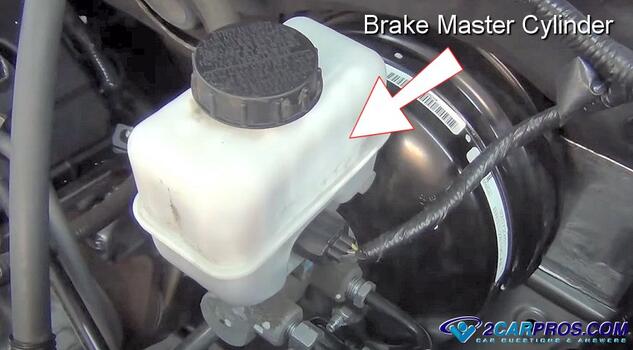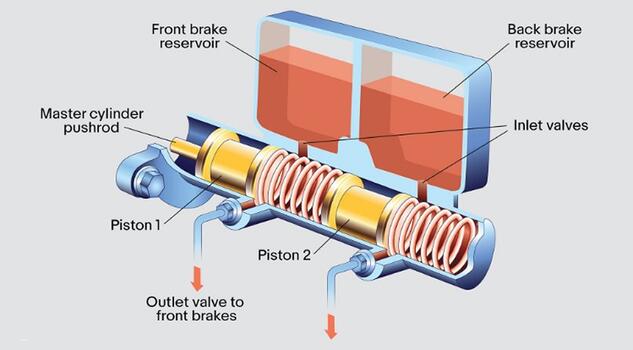Introduction
The brake master cylinder is the hydraulic pressure part of the brake system which holds brake fluid in it's reservoir. When the brake pedal is pushed down the plunger inside the brake master cylinder housing is forced forward which transfers pressurized fluid to the brake calipers or wheel cylinders which then activates the brake system to slow the car down.
The master cylinder is divided into two separate sections, a primary and secondary pressure system. This "built in" safety system was created inside the master cylinder so if one half of the brake system fails, the car will still have the remaining half to help slow the vehicle down. This safety precaution is divided into front or rear brake systems.
Components of a Brake Master Cylinder
A typical brake master cylinder consists of several key components:
- Reservoir: Holds the brake fluid and supplies it to the master cylinder.
- Low Fluid Sensor: This sensor is located in the fluid reservoir to help detect low fluid levels.
- Piston: Moves within the cylinder bore to create hydraulic pressure.
- Cylinder Bore: The cylindrical chamber in which the piston moves.
- Primary and Secondary Seals: Prevent fluid from leaking past the piston.
- Return Spring: Ensures the piston returns to its original position after braking.
- Push Rod: Connects the brake pedal to the piston.
- Check Valves: Maintain pressure within the system and prevent backflow of fluid (some models only).
- Bleed Ports: Allow air to be purged from the system during maintenance (some models only).
Brake Master Cylinder Exploded View
Here you can see the inner workers of a typical brake master cylinder included the brake fluid reservoir.
Operation of a Brake Master Cylinder
1. When the brake master is at rest (not in use) the piston or plunger rests at the rear on the master housing bore and is held in place by return springs. These springs are responsible for pushing back the brake pedal along with the piston after a braking event to allow the brake system to release.
2. The brake fluid reservoir is used to store brake fluid while allowing fluid to enter the piston chamber through two small orifices at the top of the housing and below the fluid reservoir, these ports supply the brake system with brake fluid.
3. As you can see by the image above, the system is designed with two separate seal and plunger applications which help stop the car if either the front, or rear brake system has failed. Older cars only had one chamber which was hazardous.
4. When the driver applies the brakes, a pushrod at the top of the brake pedal actuates the brake booster which, in turn transfers the force to the master cylinder and depress the piston which moves forward and creates hydraulic pressure. This pressure is transmitted through the brake lines through the ABS system and then to the calipers or wheel cylinders at each wheel.
5. When the brake pedal is released the master cylinder and brake booster return springs force the brake pedal into the upright or natural position while allowing the brake fluid to travel back into the fluid reservoir for future use.
Brake Master Cylinder Functionality Principles
The fundamental principles of fluid dynamics and Pascal's law evenly distribute the fluid pressure using an incompressible fluid to each portion of the brake system such as the brake caliper or wheel cylinders. This principle ensures that the force applied by the driver's foot is effectively transmitted to the brakes.
Common Problems and Maintenance
Several common issues can affect the performance of a brake master cylinder:
- Internal Leakage: This can cause the brake pedal to sink to the floor.
- External leaks: This can cause the brake fluid to be low triggering the brake warning light to come on.
- Impaired Piston Movement: This can cause the brake system to lock up as the return spring is not strong enough to return the brake master to its neutral position.
Regular maintenance of the brake system, including checking for leaks, bleeding the brakes, and replacing brake fluid, can help ensure the proper functioning of the brake master cylinder and the overall braking system.
Credits
This guide knowledge base was created by the 2CarPros Team, and by Ken Lavacot: Automobile repair shop owner and certified master automobile technician of over 30 years. If you have question or need help please ask one of our experts we are happy to help. Please visit our 2CarPros YouTube Channel.





